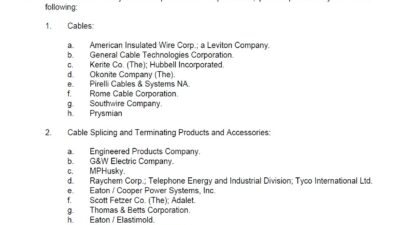The ASME committee for reliability, availability, and maintainability helps power plant owners and operators achieve their goals.

Power plant owners and operators have always struggled to control reliability, availability, and maintainability. Here are some common questions whose answers are not so common:
-
How do I identify my exposures to risk?
-
How do I mitigate them?
-
How should I prioritize them?
-
How can I effectively implement these changes to get the desired results?
-
How do I best utilize my maintenance/repair resources?
-
How do I obtain and sustain an effective preventive maintenance program?
-
How can I justify the budget I need to keep the plant operating properly?
In response to these types of questions, ASME International created a Reliability, Availability and Maintainability (RAM) Committee to develop a standard to address these issues. The new RAM standard, issued for power plants toward the end of 2013, offers a very structured process to help owners, engineers, contractors, and operators coordinate and work effectively on RAM projects.
The concept of RAM is nothing new; it has been around for about 40 years. However, over the decades it has had multiple uses and interpretations. Many different organizations even created their own definitions. ASME decided to take on consolidating this plethora of information in response to the industry’s demand for a standard that gets results.
Definitions
First, let’s define RAM:
Reliability: The probability that something will operate for its designed interval under a specific conditions (the ability to maximize uptime).
Availability: The probability that something can operate at any given moment (the ability of your plant to operate when you need it).
Maintainability: The probability that something can be restored to operating condition in a specified amount of time (the ability to minimize downtime).
Equation No. 1: Defines availability as a function of reliability and maintainability.
How to get results
Availability is maximized when uptime is large and downtime is small. In other words, to achieve your availability goals, you want high reliability and high maintainability. So the ultimate goal of a power plant is to truly control availability, which is done by controlling reliability and maintainability. The question is, “How can I control reliability and maintainability?”
“If you can measure it, you can control it.” This adage is the fundamental concept of a control loop. It is based upon deviation from a measured input parameter (setpoint) to initiate a change. This is also true when it comes to reliability, availability, and maintainability. The new RAM standard discusses the importance of identifying measurable parameters (based on your equipment and maintenance structure), regularly monitoring them and making the appropriate adjustments.
This new standard offers a very structured process to help owners, engineers, contractors, and operators coordinate to achieve the common goal.
The RAM process:
-
Predevelopment
-
Program development
-
Program implementation
-
Program revision
The standard provides the guidance so that RAM can be incorporated into all aspects of the power plant’s lifecycle. All that is developed in each of these phases culminates in the RAM program manual. This is the physical product that identifies the customized program in its entirety for a specific power plant. This document helps to guide the RAM manager in sustaining the program throughout its lifecycle with measured and controlled results.
One of the most powerful statements in the standard is that it requires a budget to be developed for the implementation of the program. This gives the owner a clear understanding of the necessary maintenance costs required to mitigate risk and achieve goals.
Performance-based versus prescriptive
The standard is purposely brief and written at a high level. This is to offer the most diversity and freedom of design. The standard’s strength comes from the fact that it is “performance-based” instead of “prescriptive.” Prescriptive standards state their requirements in exact terms, usually in very precise detail. History has shown that prescriptive standards can be resistant to changes in technology, restrictive to innovation, and limiting in applicability. Performance-based standards tend to take the view of “the ends justify the means.” They state what you need to get done and leave the means and methods to the engineers, owners, and operators. A performance-based standard maximizes the opportunity for compliance for power plants of various sizes, fuels, technologies, and functions. For these reasons, ASME is now encouraging performance-based standards over prescriptive ones.
The new ASME RAM standard is not a magical cure to all of your power plant’s problems. Rather, it offers a structured, practical approach that can be customized to your specific needs to maximize your ability to achieve your reliability, availability, and maintainability goals.
Brian Wodka is a mechanical engineer at RMF Engineering and the vice chair of the ASME RAM Standards Committee. He leads the power plant assessment and reliability team at RMF Engineering and has performed power plant assessments and boiler inspections for the past 12 years. Wodka also sits on the Board of Boiler Rules along with the Board of Stationary Engineers for the state of Maryland.



